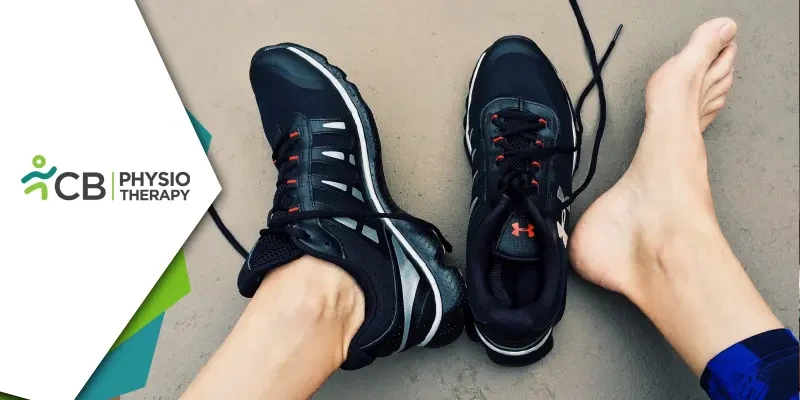Heel pain is a common ailment that affects people of all ages, often disrupting daily activities and diminishing overall quality of life. Whether it's a stabbing sensation first thing in the morning or a persistent ache after a long day on your feet, heel pain can be a formidable adversary. One of the most effective and non-invasive ways to address this issue is through physiotherapy. In this blog post, we'll explore the various causes of heel pain and delve into the crucial role that physiotherapy plays in its management and rehabilitation.
Understanding Heel Pain
Heel pain can stem from various causes, making it essential to identify the underlying issue to formulate an effective treatment plan. Some common culprits of heel pain include:1: Plantar Fasciitis:
This is perhaps the most prevalent cause of heel pain. Plantar fasciitis occurs when the band of tissue that runs from the heel to the toes, known as the plantar fascia, becomes inflamed. Excessive strain, improper footwear, and repetitive stress can contribute to the development of this condition.
2: Achilles Tendinitis:
The Achilles tendon connects the calf muscles to the heel bone, facilitating movement. Overuse or sudden increases in physical activity can lead to inflammation of this tendon, resulting in pain and discomfort.
3: Heel Spurs:
A heel spur is a bony outgrowth on the underside of the heel bone. While not always painful, they can cause discomfort and inflammation when they press on surrounding tissues.
4: Bursitis:
Inflammation of the bursa sac, which cushions and lubricates the joints, can occur in the heel and lead to pain. This is often caused by excessive pressure or friction on the heel, such as from repetitive impact.
5: Foot Arch Problems:
Flat feet or high arches can contribute to heel pain. The lack of proper arch support or an excessive arch can lead to an uneven distribution of weight, placing strain on the heel.
The Role of Physiotherapy
Physiotherapy, or physical therapy, is a holistic approach to healing that focuses on restoring mobility, reducing pain, and promoting overall well-being. When it comes to heel pain, physiotherapy plays a crucial role in both managing symptoms and addressing the root causes. Here's how physiotherapy can benefit individuals suffering from heel pain:1: Pain Management:
Physiotherapists employ various techniques to alleviate pain and discomfort. These may include ice or heat therapy, tens, ultrasound, and manual techniques to reduce inflammation and improve blood circulation to the affected area.
2: Stretching and Strengthening Exercises:
Targeted exercises are designed to stretch and strengthen the muscles and tendons surrounding the heel. For example, calf stretches, toe curls, and Achilles tendon stretches can help improve flexibility and reduce strain on the heel.
3: Gait Analysis and Biomechanical Correction:
An essential aspect of physiotherapy for heel pain is analyzing the patient's gait (walking pattern) and addressing any biomechanical issues. Custom orthotics or shoe inserts may be recommended to provide proper support and alignment, reducing strain on the heel.
4: Manual Therapy:
Physiotherapists may use hands-on techniques such as massage, joint mobilization, and manipulation to improve joint mobility and reduce muscle tension in the foot and ankle.
Understanding the contributing factors to heel pain is crucial for long-term recovery. Physiotherapists educate patients on proper footwear, ergonomics, and lifestyle modifications to prevent the recurrence of heel pain.
Physiotherapy involves a gradual and tailored return to normal activities. This may include a progressive exercise program and activity modification to prevent overloading the heel during the recovery process.
Heel pain can significantly impact daily life, but with the right approach, it is often manageable and treatable. Physiotherapy emerges as a cornerstone in the comprehensive treatment of heel pain, addressing not only the symptoms but also the underlying causes. Through a combination of targeted exercises, manual therapy, biomechanical correction, and patient education, physiotherapists empower individuals to regain control over their mobility and comfort.
If you're grappling with heel pain, seeking the expertise of a qualified physiotherapist can be a transformative step toward a pain-free and active life. Remember, the journey to recovery often begins with a single step, and with the guidance of physiotherapy, that step can lead to lasting relief and improved well-being.

